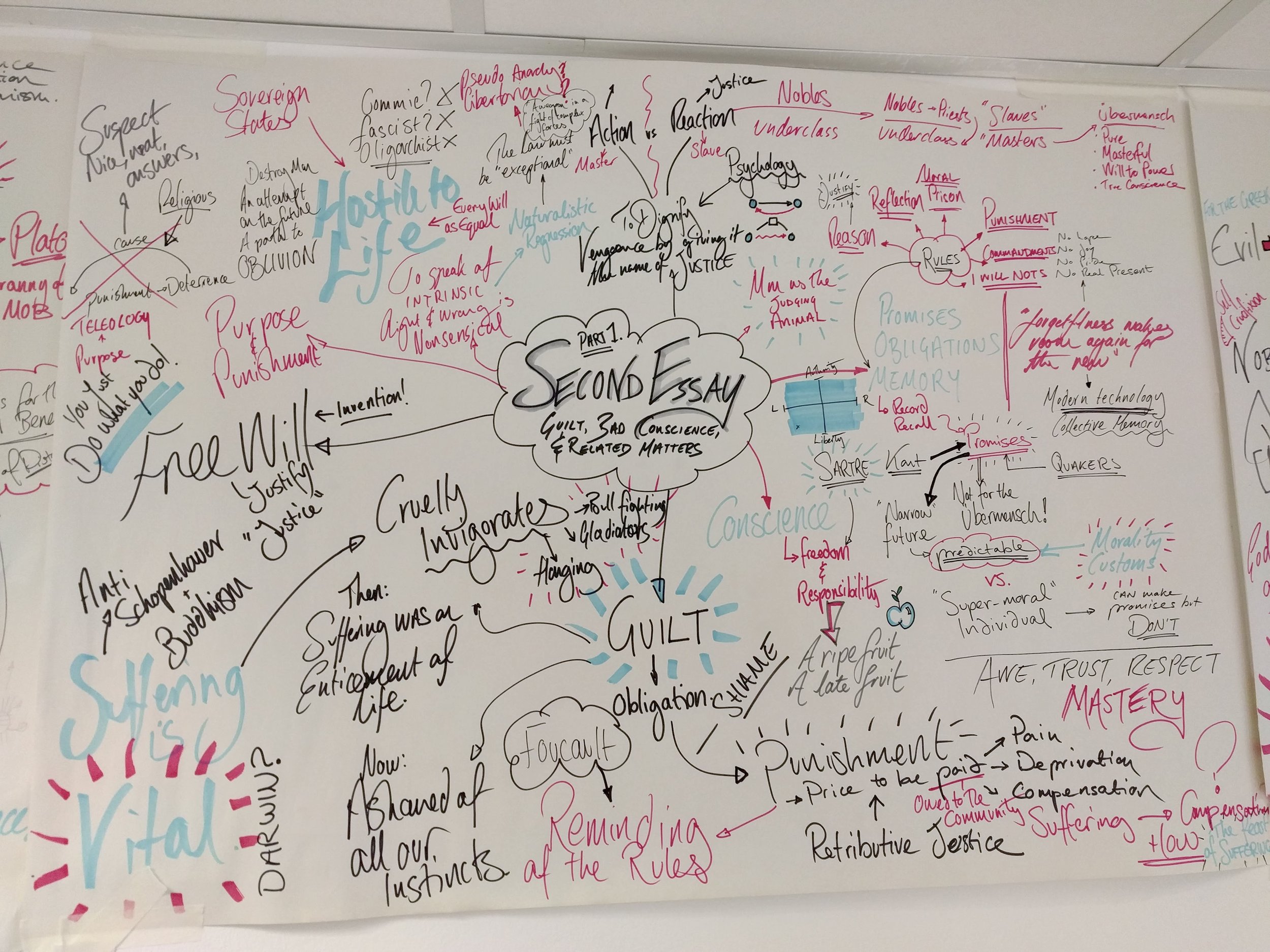Thinking on a bigger scale
When I was a teacher, and had all the space of a classroom, it was very common for my students and I to be working away on huge sheets of A1 paper - drawing out some idea, or mindmapping a text we were studying, or collecting our thoughts together on some topic. We’d then tape them all up on to the way to have an even bigger frame of reference for our thinking.
Twice in my teaching career I moved to a new building or a new classroom and was asked what I needed most for the new space. Both times I asked for the biggest whiteboards it was possible to fit. That didn’t quite work out on one of those occasions, but on the other, I ended up with an incredible, huge whiteboard on wheels that could be hauled around the room to wherever we needed it. I was once working as a consultant at a client’s offices and they had the whole side wall of the conference room as a giant whiteboard. Probably glass, I think, but a writeable surface from floor to ceiling and from wall to wall. I was very envious.
This sort of big, spatial thinking is something I’ve always done. I looked back at some old photos of when some friends and I were writing and producing some theatre productions for the Edinburgh Fringe Festival and among the pictures of us rehearsing, and having a great time/losing our minds is an incredible sort of fish-eye lens picture of how I was putting the script together for one of the shows.
We had come up with all of the major scenes of the show and then shuffled them all around until they made sense from a narrative point of view and a sort of shape to the story was emerging. After that, we added all of the story beats that each scene needed to hit - moments for the plot, character interactions, bits of action, or dialogue or comedy. From there, we typed that all up and started fleshing it all out.
It’s really not much of a different process to the one I use to put together workshops. I figure out all of the big moving pieces and lock those down to ensure the right flow, that I’m covering the key learning objectives, and that the workshop has a good balance and momentum to it. Then I start breaking each of those down into smaller pieces - the moments, activities, interactions, and opportunities that will make up the structure of the thing. Once that’s all in place I start figuring out any details that need addressing. This is usually logistical; do I need any particular resources, any particular space or location, or any particular tools?
It’s really important to me that I can see the shape of things, that I can see how the parts all connect, how things move from one to another, and how each aspect of what I am designing is related to every other. Those connections, and the flow of energy, intensity, and work that comes from the structure of the workshop are crucial to the way that I work. One way of handling this kind of process is the Learning Arches methodology that I learned whilst at Kaospilot in Aarhus, Denmark a few years ago. I think my own process has a lot of that in it but is also idiosyncratic - focusing on the things that matter most to me as a learning designer and as a facilitator.
I don’t quite have the space anymore that I used to have in my classroom as a teacher so things have to be scaled down a little. An A3 sketchbook is where things usually start and then into software like Miro where I develop the design and add detail, additional resources, and really map the thing out. I appreciate the power - and collaborative nature - of the digital tools and there are huge benefits to refining and developing a design this way. I think I do miss roughing the early stages out on paper, though. Big sheets of paper, marker pens, sticky notes, and a huge expanse of wall or desk to arrange everything on provide such a tactile pleasure.
This mapping in space and time of ideas, activities, and opportunities is inevitably a very organic sort of depiction and I often find similarities to other sorts of diagrams and illustrations. This one is of the complex social and romantic relationships between penguins that I saw at Osaka Aquarium. I love the mix of penguin romance and the diagramming style of the Tokyo subway map.







